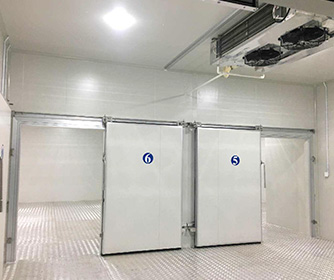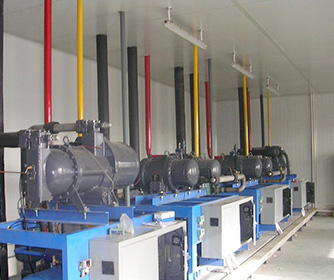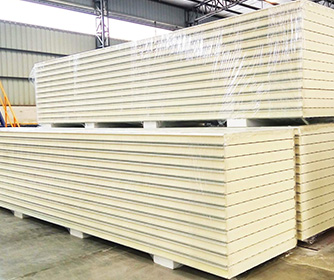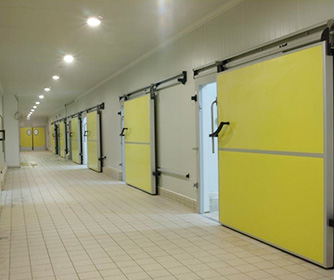Introduction to 100-Ton Water-Cooled Chillers
In the world of industrial cooling, the 100-ton water-cooled chiller plays a critical role in maintaining optimal temperatures for various processes. These systems are engineered to meet high cooling demand, making them an ideal solution for commercial refrigeration, manufacturing cooling, and process cooling in large facilities. The 100-ton chiller can handle massive thermal loads, efficiently removing heat from buildings or industrial processes. This article explores the workings, benefits, and applications of water-cooled chillers, with a special focus on energy efficiency, temperature control, and overall performance.
Understanding Water-Cooled Chillers
A water-cooled chiller functions by transferring heat from a building or process to water, which is then circulated through a cooling tower or another heat-rejection system. The water-cooled design is more efficient compared to air-cooled chillers, particularly for high refrigeration capacity applications. It uses a chilled water system, where water serves as the medium to absorb and transport heat. This setup is commonly used in HVAC systems for large commercial buildings, offering better performance in terms of energy efficiency and longevity.
How Does a 100-Ton Water-Cooled Chiller Work?
The core of the 100-ton water-cooled chiller revolves around the refrigeration cycle, which includes key components like the compressor, evaporator, condenser, and expansion valve.
Compressor: The compressor pumps the refrigerant through the system, increasing its pressure and temperature. In large industrial chillers, you might find scroll compressors, screw compressors, or even centrifugal compressors.
Evaporator: The evaporator absorbs heat from the process water or air, causing the refrigerant to evaporate. The chilled water loop then returns the water to the system to cool the area again.
Condenser: The water-cooled condenser releases the heat absorbed from the evaporator to the cooling tower water. This heat dissipation happens efficiently through a heat exchanger such as a shell and tube or plate heat exchanger.
Cooling Tower: After the condensation stage, the heat is expelled into the atmosphere via a cooling tower. This system is crucial in the heat rejection process, ensuring the chiller operates at an optimal temperature.
Refrigeration Capacity: What Does "100 Ton" Mean?
In HVAC and refrigeration systems, "ton" is a measure of the system's ability to remove heat. A 100 ton chiller can remove 100 tons of heat per hour, which is equivalent to 1.2 million BTU/hour (British Thermal Units). This cooling power makes it suitable for large spaces with substantial heat loads. Understanding the cooling tonnage of a system is essential for matching the system to the needs of a building or process.
Benefits of Water-Cooled Chillers
One of the primary advantages of a water-cooled chiller is its energy efficiency. These systems typically have a higher coefficient of performance (COP) than air-cooled chillers, meaning they produce more cooling per unit of energy consumed. Moreover, they are capable of handling larger cooling capacities, making them ideal for heavy-duty applications like industrial HVAC or commercial air conditioning.
Lower Operating Costs: The energy performance ratio (EER) of water-cooled systems is generally superior to their air-cooled counterparts, resulting in lower operating costs over time.
Longevity: The components in a water-cooled system often experience less wear due to stable temperatures provided by the chilled water loop and cooling tower.
Consistent Performance: In locations with high ambient temperatures, a water-cooled chiller maintains better performance compared to an air-cooled system, which might struggle in warmer environments.
Applications of 100-Ton Water-Cooled Chillers
The 100-ton water-cooled chiller finds applications in a variety of industries due to its versatility and high cooling capacity.
Manufacturing and Process Cooling: In industrial settings, maintaining precise temperatures is crucial. Process cooling systems help regulate machinery temperatures, keeping equipment running efficiently and reducing the risk of overheating.
Commercial Buildings: Large office complexes, hospitals, and shopping malls rely on HVAC equipment powered by water-cooled chillers to maintain comfortable indoor climates. The chilled water supply helps in managing cooling distribution across the entire building.
Data Centers: Cooling is critical in data centers to ensure that servers and other equipment function without overheating. Water-cooled chillers are a popular choice for large-scale data centers due to their reliability and energy-saving capabilities.
Chemical and Pharmaceutical Plants: Precise temperature control is required for many chemical processes. Water-cooled systems are used to keep temperatures within the necessary range for safe and effective manufacturing.
Importance of Energy Efficiency and Temperature Control
One of the top considerations when selecting a 100 ton water-cooled chiller is its energy consumption. Energy-efficient systems not only reduce operating costs but also lower the environmental impact of a facility. Advanced systems are equipped with variable speed pumps and automatic temperature control, which adjusts the system's cooling output based on real-time needs. Energy efficiency can be further improved through the use of low-GWP (Global Warming Potential) refrigerants like R-134a or R-410A.
Refrigerants and Environmental Considerations
The type of refrigerant used in a water-cooled chiller plays a significant role in its environmental impact. Traditional refrigerants, such as CFCs and HCFCs, have been phased out in many countries due to their harmful effects on the ozone layer.




